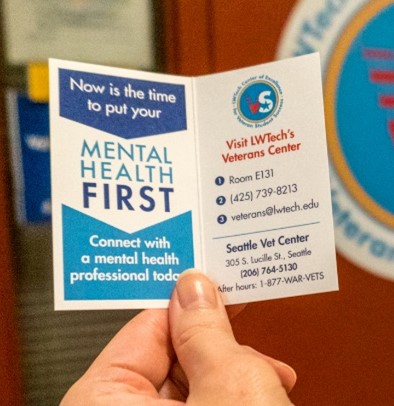Every student's mental health needs are different. Here are 5 ways you can offer the right support
About this blog series
How do you see your students? And how do your students see themselves? “Identity” is a complex and dynamic concept, which varies widely from person to person and shifts over time, as the way in which we know ourselves and one another evolves and grows. As elusive as the concept may be, identity is an essential factor in student success strategy—there is no “one size fits all” method to supporting students and helping them achieve their goals. Institutions must understand their students’ background and lived experiences to provide support and guidance that fits their needs.
We’re excited to share the first in what will be a series of blog posts that explores identities shaped by circumstances, demographic factors, and individual-specific challenges and needs. Within these posts, we’ll discuss when recognizing and differentiating support around specific identifying characteristics can be helpful and when it can be harmful. We’ll also consider the intersectional nature of identity, and how schools and their staff can become more equity-minded as they work to better support each student they serve.
My relationship with my therapist is strong because they support my issues through context. The topics I discuss aren’t typically just because I’m part of the LGBTQIA+ community, previously married, or because I have different physical or mental health needs than my peers. Instead, the issues are common to what we all go through, just perceived through the intersection of all my identities. Similarly, students come to our institutions with unique experiences and varied identities, and our mental health and wellbeing programs and resources must evolve to support them as whole people. As the student experience becomes a differentiator, institutions who adopt this appreciative approach will be institutions of student choice for many years to come.
So how can you evolve your institution’s mental health and wellbeing support? I recently discussed scalable strategies with Active Minds founder Alison Malmon as well as Dr. Ruby Hayden (Vice President of Student Services) and Juliette Blank (Mental Health Counselor) at Lake Washington Institute of Technology (LWTech). Below is our conversation about this moment in campus mental health support – with five accessible ways schools can better understand and serve students’ unique and varied needs.
The changing mental health conversation
Historically, student mental health was often part of Student Affairs budget lines and relegated to the far corners of campus where Counseling Centers found space. Many campuses took a one-size-fits-all approach, considering positive campus mental wellness as simply the absence of reported mental illnesses. Far too often, identified mental health issues usurped all other parts of a student’s identity.
Alison has seen a shift away from this “one department’s responsibility” model firsthand. In 2003, she founded Active Minds, a non-profit organization dedicated to young adult mental health advocacy, with hundreds of on-campus chapters around the country. Alison said that many of the campuses she works with now consider mental health to be a public health issue and recognize that faculty, residential life staff, and students themselves all play a role in sustaining a culture of well-being.
The degree to which students feel comfortable accessing mental health resources, the applicability of existing resources to their needs, and what their needs are all vary greatly – and as such, Alison urges that our offerings should evolve alongside our incoming generations of students.
5 ways to support the whole student
1. Recognize each student’s unique experience, including how they respond to barriers
To fully support students, we need to see and understand their whole selves. Even within the same core identity group (racial or ethnic groups, sexual orientation, gender representation, etc.), different students experience different barriers to mental wellbeing. As Alison put it, “Taking a specialized approach to identifying and recognizing the whole identity that somebody brings to our campus can help us give them the mental health support they need. It’s not just about making sure there are enough counselors in the counseling center. It’s often about creating the environment at our schools where our students can thrive-that looks different for each student.”
The first step in supporting the whole student is learning about them. At LWTech, Juliette has a brief consultation call with her students before meeting with them to understand their needs. She also has them complete a questionnaire with more specific questions, including their cultural background and gender identity. On the aggregate, consider the questions you’re asking your students about their experience, identity, and needs. What campus-wide insights do you have access to, but haven’t tapped into yet? This information and the insight it provides should inform, but not dictate, the wellness programs you build. “It’s important that I emphasize to them that they are the true experts of their own lives, and I provide a space to help them reflect and explore this further,” Juliette said. “I know that I am not the expert in their life experiences, and that we also may have different identity factors that shape how we’ve seen and experienced the world.”
2. Include students in program and resource decisions
Active Minds considers “Championing Student Voices” to be one of the key criteria for their annual Healthy Campus Awards, which recognize colleges and universities that prioritize and make progress on promoting student mental and physical health and well-being. “We cannot be talking about mental health on campus if we aren’t bringing in students as pillars of the conversation,” Alison said. “Often, we look at what policies we can change to make something better. Policies only get you so far-students know what they need, and they know how to most effectively make changes.”
LWTech puts this into practice with their student wellness advisory group, which brings students into the conversation to inform and guide strategy around programming, resource allocation, and outreach efforts. Dr. Hayden acknowledges that this may add some complexity-leaders may be hesitant to have students in the room when sensitive topics are discussed or think that students may not be interested in participating. However, she encourages her peers to push through that hesitation: “It costs you nothing as a college to open up spots on your committees to students. Sometimes there’s a fear of saying things that students shouldn’t hear-but so what? Why can’t a student know how we develop things? Why is that secret?”
As you seek to improve mental health and well-being support on campus, ask yourself: How many committees exist on campus today that are built for, but do not include, students? The first step in beginning your campus’s student success and wellness journey is to include meaningful representation of student voices in decision making. The second, much harder step is to actively and intentionally listen to those students while avoiding the potential for tokenization and disenfranchisement of certain student communities.
reimagine the student experience
3. Work to destigmatize help-seeking behavior
No one student will come through our higher education system without struggle. As Alison noted: “the pandemic didn’t create a mental health crisis, it made it a conversation.” We are facing a tremendous opportunity to right these inequities and address gaps by discussing openly and proactively what “struggle” looks like across the student lifecycle and how our institutions are poised to help our students.
Having campus leaders openly discuss their own mental health journeys helps destigmatize the topic across the community-for both students and other staff. In addition to making students feel comfortable accessing help when they need it, this also brings more campus stakeholders into the role of advocate and encourages leadership to recognize the essential need to dedicate funding to mental health resources.
“Mental health has the same dramatic health impact as getting a cast on your broken arm, we just don’t like talking about it,” Dr. Hayden said. “If you can be comfortable talking about it as an administrator, and get the folks who work with you comfortable talking about it broadly in public meetings, that helps people feel like this is not just something important for students, but something that is crucial for all of us in the community.”
4. Work to have your staff reflect the diversity of your student body
When students see themselves and their lived experiences in the staff on campus, they feel more comfortable speaking honestly. Allies serving in student-facing positions play a valuable role, but it’s essential to reflect the students you serve as much as possible. “I absolutely believe that allies are incredibly important, and using your power as an ally to support different segments of the population of students we’re serving must happen,” Dr. Hayden said. “It is also a little bit different than being a part of the community that you are serving based on their identity. It takes a combination of folks and a relationship between those who identify with our students as part of their community as well as allies to best serve our students and our institution.”
LWTech’s Veteran Services office, which has a dedicated space on campus funded through a federal grant, has a coordinator with a background as a member of the United States Armed Forces. This coordinator collaborates with the campus marketing department to research and promote mental health resources specifically for veterans, informed by their unique needs and experiences. They distribute small, wallet-sized cards with veteran-specific resources and visuals to relevant students on campus (pictured to the right).

5. Make it easy for faculty to refer students for help, and for staff to focus on the students who need it most
Staff, time, and money are all finite resources, and it’s difficult to know the most efficient and effective ways to direct these to the students most in need of intervention and guidance. As Dr. Hayden put it, “I can’t hire a case manager for every student on campus. How do we figure out a way to spend the most time with students who need it most?”
Dr. Hayden shared that LWTech’s EAB student success platform, Starfish, has been extremely useful in engaging faculty in prioritizing student mental health needs in a way that is a light lift for them. “Starfish alerts have been a way to just make sure faculty have a way to refer and trust something’s going to happen,” Dr. Hayden said. “We’ve spent a lot of time building trust with faculty that their alerts do not go into the void-you’re getting the student connected to someone.”
Faculty are nudged every quarter to submit an alert for any students they are concerned about for whatever reason, from conduct issues to a need for support resources. Dr. Hayden’s offices triages these alerts appropriately, ensuring student-facing staff, including advisors, counselors, and coordinators, have the insight they need to prioritize spending time on students in greater need of help.
More Blogs

3 ways to combat the student loneliness epidemic on your community college campus

How colleges can combat student disengagement and increase socioemotional readiness
